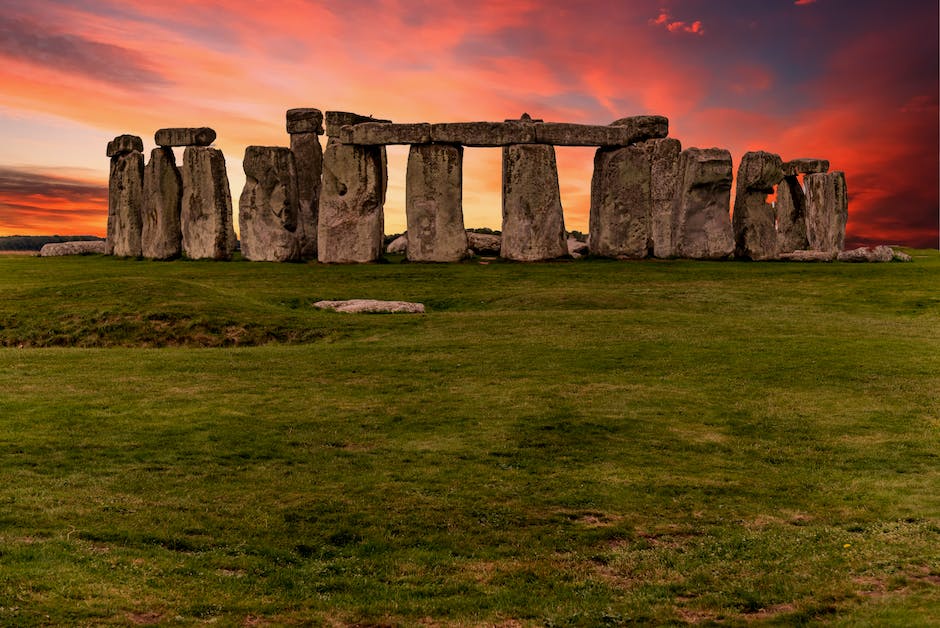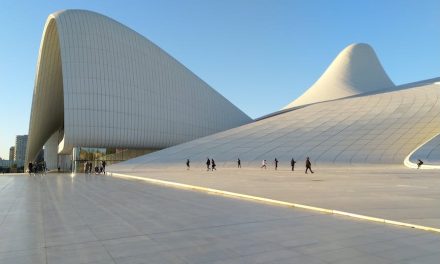Table of Contents
Preserving the past, celebrating leadership.
Introduction
The Arab world is home to a rich and diverse history, with numerous historical monuments that stand as testaments to the region’s leadership strength. These structures, scattered across different countries, reflect the architectural prowess, cultural heritage, and political power of the Arab world throughout various periods. From ancient wonders to modern marvels, the historical monuments of the Arab world offer a glimpse into the past and serve as reminders of the region’s influential leaders and their enduring legacies.
The Great Pyramids of Giza: A Testament to Ancient Egyptian Leadership

The Great Pyramids of Giza stand as a testament to the ancient Egyptian leadership and their remarkable architectural achievements. These monumental structures, built over 4,500 years ago, continue to captivate the world with their grandeur and mystery. As one of the Seven Wonders of the Ancient World, the pyramids have become an iconic symbol of Egypt and a testament to the strength and vision of its leaders.
The construction of the Great Pyramids of Giza was a monumental undertaking that required meticulous planning, skilled craftsmanship, and a strong leadership. The pyramids were built as tombs for the pharaohs, who were considered divine rulers and believed to have a direct connection with the gods. The construction of these massive structures was seen as a way to ensure the pharaoh’s immortality and eternal life.
The pyramids were built using limestone blocks, which were quarried from nearby areas and transported to the construction site. The sheer size and weight of these blocks, some weighing up to 80 tons, required a highly organized workforce and advanced engineering techniques. It is believed that tens of thousands of workers, including skilled craftsmen and laborers, were involved in the construction process.
The leadership of the pharaohs was crucial in overseeing the construction of the pyramids. They provided the vision and direction for the project, ensuring that it was carried out with precision and efficiency. The pharaohs also had to manage the vast resources required for the construction, including labor, materials, and logistics. Their ability to mobilize and organize such a massive workforce is a testament to their leadership skills and the strength of their rule.
The pyramids themselves are a reflection of the pharaohs’ leadership and their desire to leave a lasting legacy. The Great Pyramid of Khufu, the largest of the three pyramids at Giza, stands at a staggering height of 481 feet and was the tallest man-made structure in the world for over 3,800 years. Its sheer size and precision in construction are a testament to the pharaoh’s power and authority.
The pyramids also served as symbols of the pharaoh’s divine status and their connection to the gods. The intricate hieroglyphs and carvings found inside the pyramids depict scenes from the pharaoh’s life and their journey to the afterlife. These elaborate decorations were meant to ensure the pharaoh’s successful transition into the afterlife and their eternal reign as a god.
Today, the Great Pyramids of Giza continue to inspire awe and admiration. They are not only a testament to the ancient Egyptian leadership but also a reminder of the incredible achievements of human civilization. The pyramids stand as a testament to the power of vision, determination, and leadership, and serve as a reminder of the enduring legacy of the ancient Egyptian civilization.
In conclusion, the Great Pyramids of Giza are a remarkable example of ancient Egyptian leadership and architectural prowess. These monumental structures, built over 4,500 years ago, continue to captivate the world with their grandeur and mystery. The construction of the pyramids required strong leadership, meticulous planning, and skilled craftsmanship. The pharaohs’ ability to mobilize and organize such a massive workforce is a testament to their leadership skills and the strength of their rule. The pyramids themselves stand as a testament to the pharaohs’ power, authority, and their desire to leave a lasting legacy. Today, the Great Pyramids of Giza continue to inspire awe and admiration, serving as a reminder of the incredible achievements of human civilization.
The Alhambra: A Symbol of Moorish Power and Influence
The Alhambra: A Symbol of Moorish Power and Influence
The Arab world is home to a rich and diverse history, with countless historical monuments that stand as testaments to the strength and influence of its leaders. One such monument is the Alhambra, a stunning palace and fortress complex located in Granada, Spain. Built during the Moorish rule of the Iberian Peninsula, the Alhambra is a true reflection of the power and influence of the Arab leaders of the time.
The Alhambra was constructed in the 14th century by the Nasrid dynasty, the last Muslim dynasty to rule in the Iberian Peninsula. It was designed to be a royal residence, a fortress, and a symbol of the Nasrids’ authority. The complex is made up of several palaces, gardens, and defensive structures, all of which were meticulously planned and executed to showcase the wealth and power of the Nasrid rulers.
One of the most striking features of the Alhambra is its intricate and ornate architecture. The palaces are adorned with intricate carvings, colorful tiles, and delicate stucco work, all of which reflect the exquisite craftsmanship of the time. The attention to detail in every aspect of the design is a testament to the skill and dedication of the artisans who worked on the project.
The Alhambra is also known for its beautiful gardens, which were designed to be a paradise on earth. The gardens are laid out in a geometric pattern, with fountains, pools, and lush vegetation creating a serene and tranquil atmosphere. These gardens were not only a place of beauty but also served as a symbol of the Nasrids’ ability to create and maintain a harmonious and prosperous society.
In addition to its architectural and natural beauty, the Alhambra also played a significant role in the political and cultural life of the time. It served as the seat of power for the Nasrid rulers and was a center of learning and artistic expression. The palaces housed a vast library, where scholars from all over the Arab world would gather to study and exchange ideas. The Alhambra also hosted lavish banquets and cultural events, showcasing the wealth and sophistication of the Nasrid court.
The Alhambra’s influence extended beyond the borders of the Iberian Peninsula. Its unique architectural style, known as Moorish or Mudejar, had a profound impact on European architecture, particularly during the Renaissance period. The intricate carvings, geometric patterns, and use of water features found in the Alhambra can be seen in many European palaces and gardens of the time.
Today, the Alhambra continues to be a symbol of the Arab world’s rich cultural heritage and a testament to the strength and influence of its leaders. It attracts millions of visitors each year, who come to marvel at its beauty and learn about its history. The Alhambra stands as a reminder of the Arab world’s contributions to art, architecture, and civilization as a whole.
In conclusion, the Alhambra is a remarkable historical monument that reflects the strength and influence of the Arab leaders of the past. Its stunning architecture, beautiful gardens, and cultural significance make it a must-visit destination for anyone interested in the history and culture of the Arab world. The Alhambra stands as a testament to the power and influence of the Nasrid dynasty and serves as a reminder of the Arab world’s rich and diverse heritage.
The Citadel of Salah El-Din: A Fortress Reflecting Military Leadership in Egypt
The Citadel of Salah El-Din, also known as the Citadel of Cairo, is a magnificent fortress located on a hill in the heart of Cairo, Egypt. Built by the great Muslim military leader Salah El-Din in the 12th century, this historical monument stands as a testament to the strength and leadership of the Arab world.
The Citadel of Salah El-Din was strategically constructed to serve as a defensive stronghold against potential invaders. Its location on a hill provided a vantage point that allowed the military forces to monitor the surrounding areas and detect any approaching threats. The fortress was designed with thick walls and sturdy towers, making it nearly impenetrable. Its architectural features were not only functional but also aesthetically pleasing, showcasing the skill and craftsmanship of the builders.
Inside the Citadel, there are several notable structures that reflect the military leadership of Salah El-Din. The most prominent of these is the Mosque of Muhammad Ali, also known as the Alabaster Mosque. This mosque was built by Muhammad Ali Pasha, the ruler of Egypt in the early 19th century, as a tribute to Salah El-Din. Its grandeur and elegance are a testament to the power and influence of the military leader.
Another significant structure within the Citadel is the Gawhara Palace, which was built during the reign of Muhammad Ali Pasha. This palace served as the residence of the ruler and his family. Its opulent design and lavish decorations reflect the wealth and prosperity of the time. The Gawhara Palace stands as a symbol of the leadership and authority of Salah El-Din and his successors.
The Citadel of Salah El-Din also houses several museums that showcase the rich history and culture of Egypt. The Military Museum, for example, displays a vast collection of weapons, armor, and artifacts from various periods of Egyptian history. This museum provides visitors with a glimpse into the military strategies and tactics employed by Salah El-Din and his army.
In addition to its historical and architectural significance, the Citadel of Salah El-Din offers breathtaking views of Cairo. From its elevated position, visitors can admire the sprawling cityscape and the iconic landmarks such as the Great Pyramids of Giza and the Nile River. The Citadel serves as a reminder of the enduring legacy of Salah El-Din and his contributions to the Arab world.
Visiting the Citadel of Salah El-Din is a truly immersive experience that allows visitors to step back in time and witness the strength and leadership of the Arab world. The fortress stands as a symbol of resilience and determination, reflecting the military prowess of Salah El-Din and his commitment to protecting his people and their land.
In conclusion, the Citadel of Salah El-Din is a remarkable historical monument that reflects the military leadership of the Arab world. Its strategic location, impressive architecture, and significant structures within its walls all contribute to its historical and cultural importance. A visit to this fortress is not only a journey through history but also an opportunity to appreciate the strength and leadership of Salah El-Din and the Arab world.
The Petra Treasury: A Marvel of Nabatean Leadership and Engineering
The Arab world is home to a rich history and a plethora of historical monuments that reflect the strength and leadership of its past civilizations. These structures stand as testaments to the ingenuity and engineering prowess of their creators, showcasing their ability to overcome challenges and leave a lasting legacy. One such marvel is the Petra Treasury, an architectural masterpiece that exemplifies the leadership and engineering skills of the Nabateans.
Located in present-day Jordan, the ancient city of Petra was once a thriving trading hub and the capital of the Nabatean Kingdom. The Nabateans were renowned for their ability to control the lucrative trade routes that passed through their territory, and their leadership was instrumental in the city’s prosperity. The Petra Treasury, also known as Al-Khazneh, stands as a symbol of their power and influence.
The Treasury is a monumental structure carved into the rose-red sandstone cliffs that surround Petra. It is believed to have been built in the 1st century AD, and its purpose remains a subject of debate among historians. Some theories suggest that it served as a mausoleum for a Nabatean king, while others propose that it functioned as a temple or a treasury for storing valuable goods. Regardless of its original purpose, the Treasury’s grandeur and intricate design are undeniable.
The architectural brilliance of the Petra Treasury lies in its seamless integration with the natural landscape. The Nabateans were skilled engineers who harnessed the power of nature to create awe-inspiring structures. The Treasury’s facade is adorned with intricate carvings and decorative elements, showcasing the Nabateans’ mastery of stonework. The attention to detail is remarkable, with every column, frieze, and cornice meticulously crafted to create a harmonious whole.
The Treasury’s construction also highlights the Nabateans’ ability to overcome logistical challenges. The sandstone cliffs provided a natural barrier that protected the city, but they also posed a challenge for building monumental structures. The Nabateans ingeniously carved the Treasury into the cliffs, utilizing the natural rock formations to support the structure. This not only ensured its stability but also added to its aesthetic appeal.
The Treasury’s location at the end of a narrow gorge, known as the Siq, further demonstrates the Nabateans’ strategic thinking. The Siq served as a natural defense mechanism, making it difficult for potential invaders to reach the city. The Treasury’s placement at the end of this imposing pathway created a sense of awe and wonder for visitors, leaving a lasting impression of the Nabateans’ power and authority.
Today, the Petra Treasury stands as a UNESCO World Heritage Site and a popular tourist attraction. Its iconic facade has been featured in numerous films, further cementing its status as a symbol of Arab heritage and leadership. The preservation and restoration efforts undertaken by the Jordanian government and international organizations have ensured that future generations can appreciate the architectural brilliance of this ancient structure.
In conclusion, the Petra Treasury is a testament to the leadership strength and engineering prowess of the Nabateans. Its seamless integration with the natural landscape, intricate design, and strategic placement all reflect the ingenuity and vision of its creators. As one of the Arab world’s most iconic historical monuments, the Petra Treasury continues to inspire awe and admiration, serving as a reminder of the rich cultural heritage of the region.
Q&A
1. What are some examples of historical monuments in the Arab world?
Some examples of historical monuments in the Arab world include the Great Mosque of Mecca, the Pyramids of Giza, the Alhambra in Spain, and the Citadel of Aleppo in Syria.
2. How do these monuments reflect leadership strength?
These monuments reflect leadership strength through their grandeur, architectural complexity, and historical significance. They showcase the power and influence of the leaders who commissioned their construction.
3. What role do these monuments play in preserving Arab history?
These monuments play a crucial role in preserving Arab history by serving as physical reminders of past civilizations, cultural achievements, and architectural prowess. They provide valuable insights into the region’s rich heritage.
4. How do these monuments contribute to tourism in the Arab world?
These monuments attract tourists from around the world, contributing significantly to the tourism industry in the Arab world. They serve as major attractions, drawing visitors who are interested in exploring the historical and cultural aspects of the region.
Conclusion
In conclusion, the historical monuments of the Arab world serve as significant structures that reflect the strength of leadership throughout history. These monuments stand as testaments to the power, influence, and cultural richness of Arab leaders, showcasing their ability to construct grand architectural marvels that have withstood the test of time. From the Pyramids of Egypt to the Alhambra in Spain, these structures not only symbolize the leadership strength of the Arab world but also serve as reminders of the region’s rich history and cultural heritage.





Recent Comments